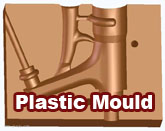> Beryllium Copper Alloys
· Beryllium Copper Strip
· Beryllium Copper Wire
· Beryllium Copper Plate
· Beryllium Copper Tube
· Casting Alloys
· Beryllium Master Alloys
· Beryllium Copper Sleeves
· Plunger tips
· EMI Finger stock
· Welding electrode/parts
· Drill String Components
· Canted Coil Springs
> Resistance Welding Alloys
> Aluminum Bronze Alloys
> Silicon Bronze Alloys
> Nickel Silver Alloys
> Phosphor Bronze Alloys
> Leaded Commercial Bronze
> Leaded Nickel Copper
> Cadmium Sheet
> Cadmium Copper
> Cadmium Tin Copper
> Cadmium Chromium Copper
> Copper Master Alloys


UNS. C19160 Leaded Nickel Copper, C19160 Leaded Nickel Copper Alloys
CuNi1Pb1P-UNS.C19160 Leaded Nickel Copper alloys
A). CuNi1Pb1P-UNS.C19160 Leaded Nickel Copper alloys Details
CuNi1Pb1P-UNS.C19160 Leaded Nickel Copper
CuNi1Pb1P-UNS.C19160 Leaded Nickel Copper C19160 and C19140 are unique precipitation hardening alloys containing copper, lead, nickel and phosphorus. The nickel and phosphorus in the alloy combine to form nickel phosphate, which dissolves in the copper on heating to a suitable temperature, and can be retained by quenching. Subsequent aging will precipitate the nickel phosphate from solid solution in a highly dispersed manner thereby creating a remarkable hardening and strengthening effect with excellent stress relaxation properties. Subsequent cold working increases the strength still further.
C19160 is nominally composed of 97.8% copper, 1.0% lead, 1.0% nickel and 0.2% phosphorus, while C19140 is nominally composed of 98.3% copper, 0.5% lead, 1.0% nickel and 0.2% phosphorus. They are noted for their high corrosion resistance, high tensile and yield strengths, high electrical conductivity, machinability and resistance to stress relaxation.
Since the lead and nickel phosphate are not in solid solution when the alloys are in the precipitation hardened condition, the electrical conductivities are comparatively high. When suitably heat treated, one can expect a conductivity of about 55% IACS. The lead content also imparts good machinability to both alloys.
Good formability, headability, ease of plating and a high bend strength are also properties for which the alloys are known, allowing them to successfully replace the well known beryllium coppers in many applications where high strength, corrosion resistant alloys are needed. There is a considerable cost advantage with the leaded nickel copper.
Typical Application for CuNi1Pb1P-UNS.C19160 Leaded Nickel Copper alloys:
Electrical Industry: Electrical Contacts, Connector Pins, Sockets
Industrial: Electronic Equipment, Cylindrical Contacts for coaxial and circular connector
Available Sizes:
Custom Diameter & Sizes, Random Mill lengths
Available Products (forms):
Round bars, Flat bars, Square bars, Wires
Custom shapes are available upon request.
B).
CuNi1Pb1P-UNS.C19160 Leaded Nickel Copper
Chemical Composition:
Ni: 0.80-1.20%
Pb: 0.80-1.20%
P: 0.15-0.35%
Sn: 0.05% Max.
Zn: 0.50% Max.
Fe: 0.05% Max.
Cu: Reminder
Note: Cu value include Ag, and Cu + others elements to be 99.50% Min.
C).
CuNi1Pb1P-UNS.C19160 Leaded Nickel Copper
Typical Physical Properties:
Density at 68°F: 0.321 Lbs./In.3
Specific Gravity: 8.90
Melting Point (Liquidus): 1082°C (1980°F)
Coefficient of Thermal Expansion per °F: 9.8 x 10-6 (77-212°F)
Electrical Conductivity at 68°F (volumetric): 50% IACS Min.(aged and drawn)
Thermal Conductivity Btu/ft.2/ft./hr./°F at 68°F: 146
Modulus of Elasticity - Tension: 18,000 ksi
Note:
1). the units are based upon US Customary.
2). the typical physical properties apply to age hardened products.
D). CuNi1Pb1P-UNS.C19160 Leaded Nickel Copper
International Specification/Production Standards:
Rods/Bars/Wires: UNS.C19160
European Standards: CuNi1Pb1P, DIN 17666
Note:
ASTM: American Society for Testing and Materials
Note: Unless otherwise specified, material will be produced to ASTM.
E).
CuNi1Pb1P-UNS.C19160 Leaded Nickel Copper
Mechanical Properties:
The detailed Mechanical Properties will be available on request from customers.
F). CuNi1Pb1P-UNS.C19160 Leaded Nickel Copper
Most Commonly Temper Used:
Rods/Bars/Wires: 1/2 H (TD02), H (TD04), HT(TH04)

CHECK the ALB Copper Alloys feature on specialty copper alloys for Automotive industry.

CHECK the ALB Copper Alloys feature on specialty copper alloys for Aerospace industry.

CHECK the ALB Copper Alloys feature on specialty copper alloys for RWMA industry.

CHECK the ALB Copper Alloys feature on specialty copper alloys for Plastic Mould industry.








